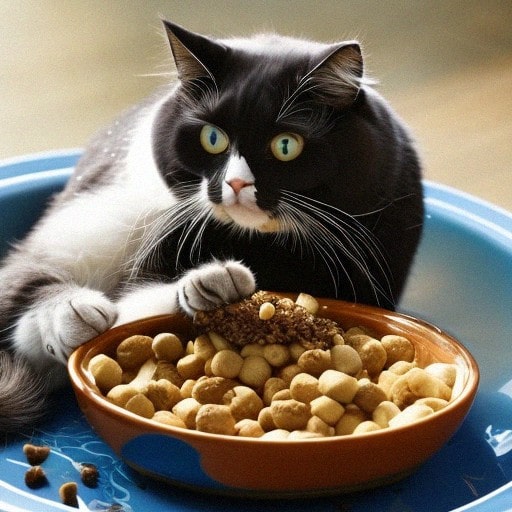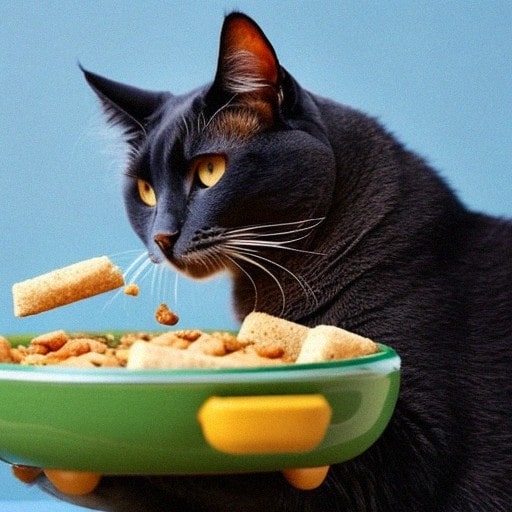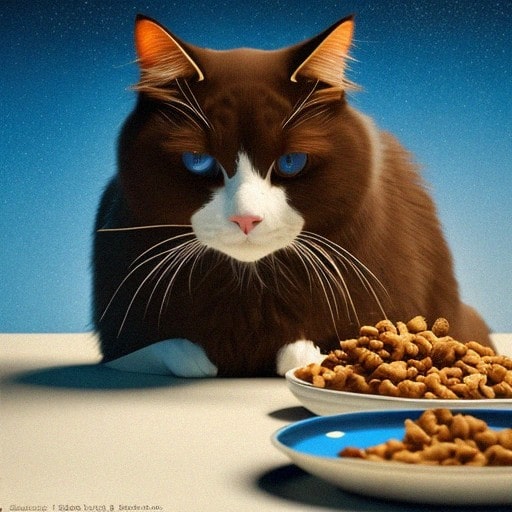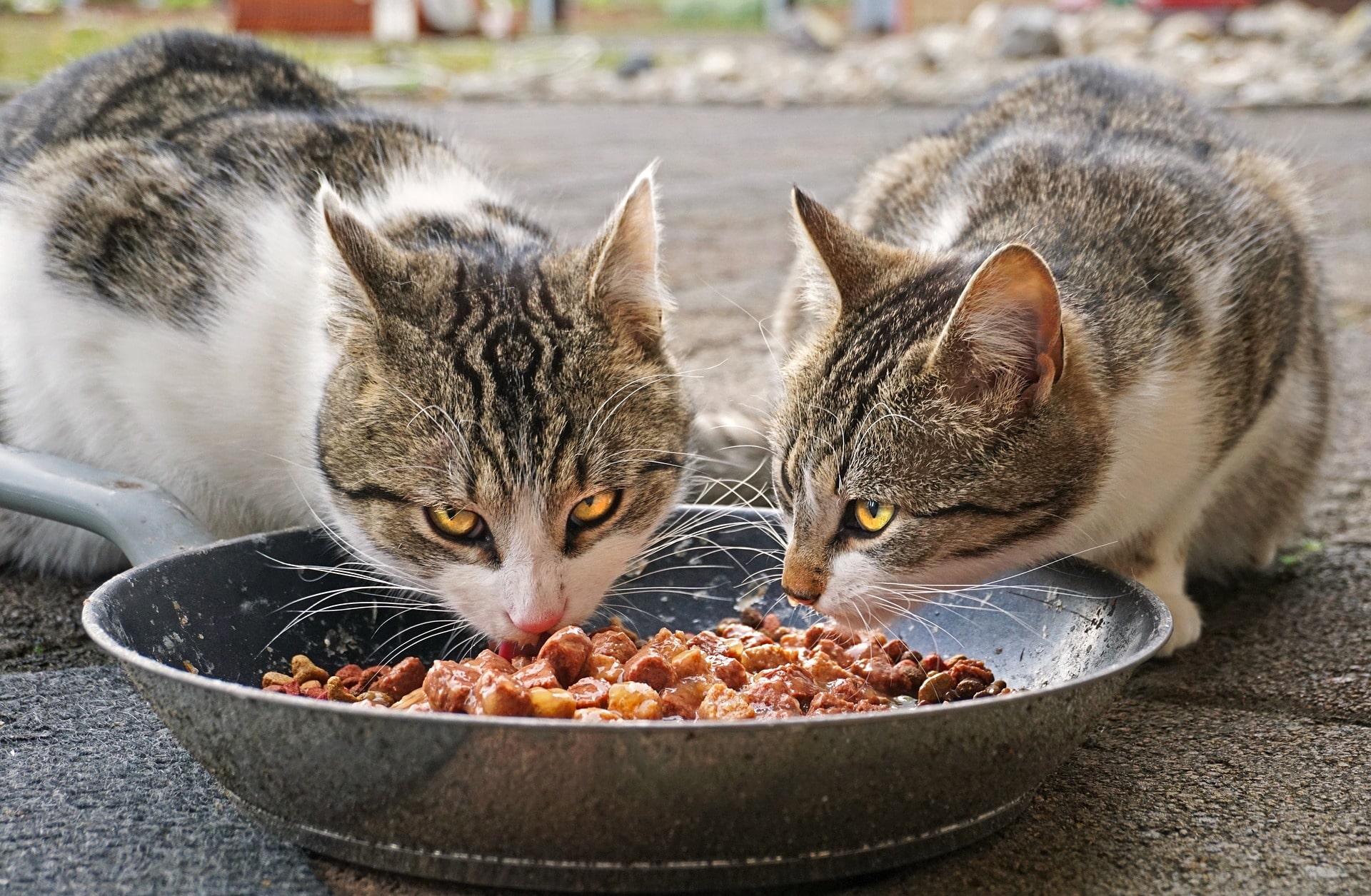Cats are known for their independence and curious personalities, but they rely on us to make sure they get the nutrition they need to stay healthy.
With so many different types of cat food available, it can be tough to determine the best choice for your furry feline. In this article, we’ll explore the best types of cat food to help you make an informed decision.
Dry Cat Food: A Convenient Choice
Dry cat food is the most popular type of cat food on the market. It is a convenient choice for many pet owners because it is easy to store, has a long shelf life, and is cost-effective. Many brands of dry cat food offer a complete and balanced diet that provides all the essential nutrients your cat needs.
Dry cat food is also beneficial for dental health. The kibble’s crunchy texture can help reduce plaque and tartar buildup, keeping your cat’s teeth and gums healthy.

Wet Cat Food: For Cats Who Love Moisture
Wet cat food is another popular choice for pet owners. This type of cat food has a high moisture content, which can help keep your cat hydrated, especially if they don’t drink enough water. Wet cat food is usually more expensive than dry cat food, but it’s typically more palatable for cats.
Wet cat food comes in a variety of flavors and textures, making it an excellent choice for cats with picky palates. It’s also easy to digest, making it ideal for cats with digestive issues.
Raw Cat Food: A Natural Option
Raw cat food is a type of cat food made from raw meat, fruits, and vegetables. It’s designed to mimic the natural diet of a cat in the wild. Raw cat food is becoming increasingly popular, but it’s important to note that it can be more expensive and requires careful handling to ensure that it’s safe to eat.
Proponents of raw cat food argue that it provides numerous benefits, including improved dental health, shinier coat, and increased energy levels. However, it’s essential to do your research and consult with a veterinarian before switching your cat to a raw food diet.
———————-ADVERTISEMENT———————-
Homemade Cat Food: A Personalized Choice
Homemade cat food is an excellent choice for pet owners who want complete control over their cat’s diet. With homemade cat food, you can tailor the ingredients to meet your cat’s specific needs, particularly if they have food allergies or sensitivities.
Homemade cat food can be more expensive and time-consuming to prepare than other types of cat food. It’s also essential to make sure that your cat’s diet includes all of the essential nutrients they need to stay healthy.
Grain-Free Cat Food: For Cats with Food Sensitivities
Grain-free cat food is a type of cat food made without grains such as wheat, corn, or soy. This can be beneficial for cats with food sensitivities or allergies, as these ingredients can be challenging to digest.
However, not all cats require grain-free cat food, and there is some debate over whether it provides any significant health benefits. It’s best to consult with a veterinarian before making any changes to your cat’s diet.

Limited Ingredient Cat Food: For Cats with Allergies
Limited ingredient cat food is another type of cat food designed for cats with food allergies or sensitivities. It contains a limited number of ingredients, typically one protein source and one carbohydrate source, to minimize the risk of an allergic reaction.
Limited ingredient cat food can be more expensive than other types of cat food, and it may not be suitable for cats who require a more varied diet. However, if your cat has food allergies or sensitivities, limited ingredient cat food can be an excellent choice to help manage their condition.
Senior Cat Food: For Aging Cats
As cats age, their nutritional needs change, and they may require a different type of cat food to maintain their health. Senior cat food is specially formulated to provide the nutrients that aging cats need to stay healthy and active.
Senior cat food is typically lower in calories and fat than other types of cat food, as older cats tend to be less active and have slower metabolisms. Additionally, senior cat food often contains supplements such as glucosamine and chondroitin, which can help maintain joint health.
Kitten Food: For Growing Kittens
Kitten food is a type of cat food that is formulated to meet the nutritional needs of growing kittens. Kittens require a diet that is high in protein and fat to support their rapid growth and development.
Kitten food is typically higher in calories than adult cat food and contains additional nutrients such as calcium and phosphorus to support healthy bone development. It’s essential to feed your kitten a high-quality kitten food until they reach maturity, which is typically around 12 months of age.
———————-ADVERTISEMENT———————-
Prescription Cat Food: For Cats with Health Issues
Prescription cat food is a type of cat food that is specially formulated to meet the nutritional needs of cats with specific health conditions. This type of cat food is available by prescription only and is typically sold through veterinary clinics.
Prescription cat food can be more expensive than other types of cat food, but it can be an essential part of managing certain health conditions such as kidney disease, diabetes, or obesity. If your cat has a specific health condition, it’s essential to consult with your veterinarian to determine if prescription cat food is necessary.

High-Protein Cat Food: For Active Cats
High-protein cat food is a type of cat food that is designed for active cats who require a high-energy diet to support their active lifestyle. This type of cat food typically contains a higher percentage of protein than other types of cat food.
High-protein cat food can be more expensive than other types of cat food, and it may not be suitable for all cats. However, for active cats who require a high-energy diet, high-protein cat food can be an excellent choice to support their active lifestyle.
Final Thoughts
In conclusion, there are many different types of cat food available on the market, each with its unique benefits and drawbacks. When choosing a type of cat food for your furry friend, it’s essential to consider their nutritional needs, age, and any health conditions they may have.
Whether you choose dry cat food, wet cat food, raw cat food, homemade cat food, grain-free cat food, limited ingredient cat food, senior cat food, kitten food, prescription cat food, or high-protein cat food, the most important thing is to ensure that your cat’s diet provides all of the essential nutrients they need to stay healthy and happy. By taking the time to choose the right type of cat food and monitoring your cat’s health, you can help ensure that they live a long and healthy life by your side.
Remember, it’s always important to consult with your veterinarian before making any significant changes to your cat’s diet. Your veterinarian can help you determine the best type of cat food for your feline friend based on their individual needs and circumstances.
